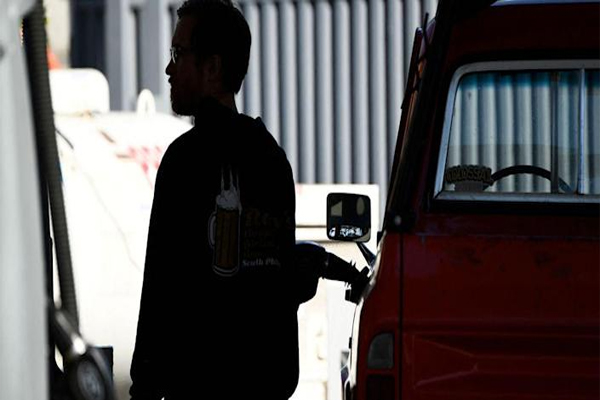Worse-case scenario for U.S. gasoline prices may be $5 a gallon, says GasBuddy’s De Haan

Myra P. Saefong, MarketWatch
SAN FRANCISCO
EnergiesNet.com 02 23 2022
U.S. drivers are looking at the highest prices for gasoline at the pump since at least 2013, with prices for oil nearing $100 a barrel — a level it hasn’t reached in more than seven years — in the wake of Russia’s move into Ukraine.
Russian President Vladimir Putin’s decision to send troops into Ukraine where Russian separatists have been fighting the Ukraine army resulted in Brent crude oil spiking to an intraday high of $99.50 a barrel on Tuesday, “ensuring American motorists will be paying more for gasoline at the pump,” says Brian Milne, editor and product manager, at DTN. “Unless we see a quick resolution, Brent crude will push past $100 a barrel, sending U.S. gasoline prices to $3.75 a gallon by early March.”
Retail gasoline prices were already on the move, with the average national price for regular unleaded at $3.541 a gallon Tuesday morning, according to travel and navigation app GasBuddy. They’re up 2.1 cents from Sunday, and up nearly 21 cents from a month ago. Prices stand at their highest since the summer of 2014, GasBuddy data show. A move to $3.75 or more would lift the per-gallon cost to the highest since about March 2013.

For each $1 a barrel rise in oil prices, the national average gasoline price rises around 1.5 cents a gallon, given base prices of $90 a barrel for U.S. benchmark West Texas Intermediate crude, and $3.65 a gallon for gasoline, says Patrick De Haan, head of petroleum analysis at GasBuddy. If oil spikes by $5 a barrel during a single trading session, for example, motorists would generally start paying for it in as little as 72 hours, with that move fully passed on in seven to 12 days, he says.
Read: Some U.S. drivers may pay highest gasoline ‘prices of their lives’ this spring
On Tuesday, the front-month March WTI oil futures CLH22, +1.32% CL.1, -1.64% settled at $92.35 a barrel, up 1.4%. Global benchmark Brent crude saw its April contract BRNJ22, -0.89% BRN00, -0.87% move up by 1.5% to $96.84 a barrel — the highest finish since September 2014.
See: Why OPEC+ may not want $100 oil prices
When oil prices climbed to $100 back in 2014, gasoline prices were “consistently” in the upper $3 range, from $3.50 to $3.85, says De Haan. Gasoline prices on average peaked at a record $4.10 a gallon in 2008, when oil hit $147 a barrel, he says, but oil didn’t stay high for long.
Oil supply disruptions would be key to the outlook for gasoline, with Russia the third largest producer of oil in the world, after the United States and Saudi Arabia, according to 2020 data from the U.S. Energy Information Administration, which pegged its production level of petroleum and other liquids at 10.5 million barrels a day, or about 11% of the world total.
“If there is a supply disruption in Russia or elsewhere, then prices could move very quickly as we have seen in the past,” says Ryan Fitzmaurice, commodity strategist at Rabobank. During the Libyan civil war of 2011, Brent went from $90 to over $125 in just four months, and U.S. retail gasoline prices shot up to nearly $4 a gallon from around $3 at the start of the event, he says.
The Russia-Ukraine conflict adds an “asymmetric upside risk to an already bullish oil market,” says Fitzmaurice. The Biden administration’s efforts to lower gasoline prices have been “largely ineffective,” with oil prices fast approaching the $100 mark, despite coordinated releases from the U.S. Strategic Petroleum Reserve, as well as attempts at convincing the Organization of the Petroleum Exporting Countries to produce more oil, he says.
OPEC and its allies, together known as OPEC+, are set to hold their next meeting on March 2 to decide on oil production levels. OPEC+ has not met their production commitment for the past several months, “under producing quotas that have raised concerns over the amount of available spare oil production capacity globally that has underpinned buying support for crude oil,” says DTN’s Milne.
The group of producers reached an agreement in July of last year to raise monthly production starting in August 2021 by 400,000 barrels per day to phase out the 5.8 million-barrel in production cuts introduced in 2020.
It’s a “perilous situation that could have a major effect on U.S. motorists and amongst the most dire in recent memory in terms of potential outcome being negative.”— Patrick De Haan, GasBuddy
However, OPEC is running “very low” on spare production capacity, outside of the group’s biggest producer, Saudi Arabia, which has also “made it clear they aren’t at America’s beck and call to raise production,” says De Haan. Russia, which is part of the larger OPEC+ group, meanwhile, appears unstable, and “I would expect some level of retaliation to global oil as ‘punishment’ for sanctions they’re likely be hit with,” he says. Still, De Haan doesn’t expect China to observe any such sanctions, so some of Russia’s oil may make it to China, “limiting the full blow if Russia cuts exports.”
Either way, it’s a “perilous situation that could have a major effect on U.S. motorists and amongst the most dire in recent memory in terms of potential outcome being negative,” says De Haan, who says the worst case scenario for gasoline prices, which is “improbable but not impossible,” would be a national average of $5 a gallon.
marketwatch.com 02 22 2022












